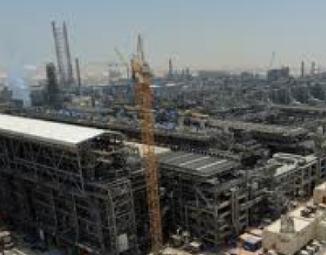A detailed study of natural gas oxidation under fuel rich conditions is proposed. As a result of this research the chemical mechanism of the process will be built and validated. Better understanding of methane oxidation under very fuel-rich conditions will allow the development of new technologies for conversion of natural gas to syngas. Syngas production from natural gas can be established as a first stage of the so-called Gas-toLiquid process (GTL). In figure bellow you can see a huge "Pearl GTL project in Qatar" builded by Shell Corporation
Usually, the GTL process involves two stages: the first is the conversion of methane to syngas (a mixture of CO, H2 and H2O) and the second is the so-called Fischer-Tropsch process or similar, where syngas is converted to liquid hydrocarbons. There are several methods to carry out the first stage of GTL, the most advantageous of which, seems to be partial oxidation, as it does not require additional energy sources and results in an H2 to CO ratio, favorable for the subsequent Fischer-Tropsch process. The main challenge to be met for practical realization of partial oxidation, and is addressed in the proposed research, is the demand for technology suitable for the stabilization of the self-sustaining process of oxidation of very fuel rich methane/oxygen mixtures, which cannot be ignited by traditional means.
The second part of the research concerns to the fact that natural gas from some wells contains significant amounts of sulfur and carbon dioxide. Therefore, a part of the proposed research is related to the study of the reactions of iron oxide nanoparticles with H2S. We believe this will lead to a new technology for natural gas cleanup and will pave the way to the conduction of the GTL process with natural gas from highly sulfur-contaminated sources.
The methodology of this research is based on the use of state of the art laser spectroscopy methods for combustion diagnostics combined with computer modeling of the processes. For the nanoparticles concentration a novel method of Quartz Crystal Microbalance measurements combined with Particle Mass Spectrometry will be used. |
||


